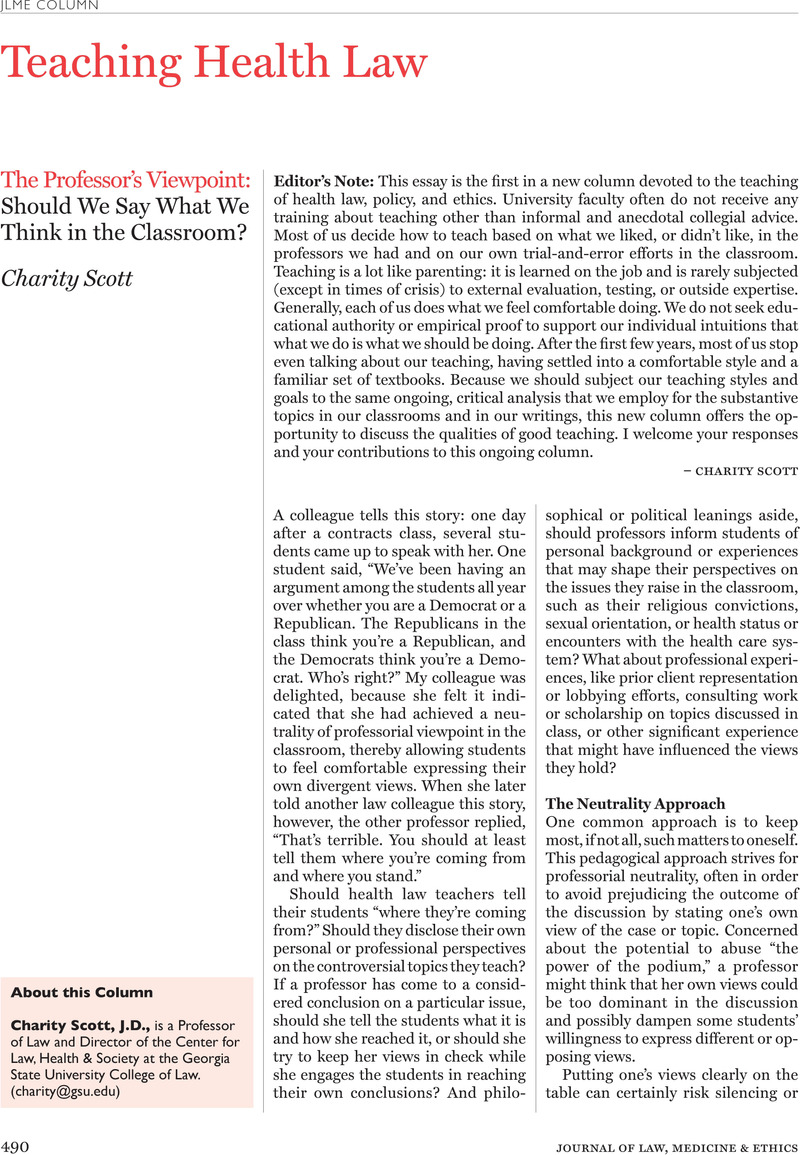Article contents
Teaching Health Law: The Professor's Viewpoint: Should We Say What We Think in the Classroom?
Published online by Cambridge University Press: 01 January 2021
Abstract

- Type
- JLME Column
- Information
- Copyright
- Copyright © American Society of Law, Medicine and Ethics 2007
Footnotes
Editor’s Note: This essay is the first in a new column devoted to the teaching of health law, policy, and ethics. University faculty often do not receive any training about teaching other than informal and anecdotal collegial advice. Most of us decide how to teach based on what we liked, or didn’t like, in the professors we had and on our own trial-and-error efforts in the classroom. Teaching is a lot like parenting: it is learned on the job and is rarely subjected (except in times of crisis) to external evaluation, testing, or outside expertise. Generally, each of us does what we feel comfortable doing. We do not seek educational authority or empirical proof to support our individual intuitions that what we do is what we should be doing. After the first few years, most of us stop even talking about our teaching, having settled into a comfortable style and a familiar set of textbooks. Because we should subject our teaching styles and goals to the same ongoing, critical analysis that we employ for the substantive topics in our classrooms and in our writings, this new column offers the opportunity to discuss the qualities of good teaching. I welcome your responses and your contributions to this ongoing column. – charity scott
References
- 1
- Cited by


